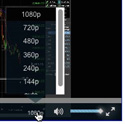Recently, I spent several long hours going through big picture counts on the major exchanges and sub-indices. I’m going to share my thoughts in a video (below), which looks at the final 5th wave of the NYSE, SP500, and NDX to see how they correlate and what the probable path forward is to a final top.
There aren’t any surprises, based upon the counts I’ve been presenting, but correlating two different exchanges that have differing structures (which have to top at the same time,), can bring with it some challenges — just staying on top of the changing counts.
Exchange counts can’t get out of alignment with their sub-indices on a grand scale, but the structures are often so different at market tops (where you can see non-confirmations, where volume is thin, and where there are forces are work trying to keep sectors up and prevent the inevitable crash), that it can be a real challenge keeping a valid count so that you can predict the probable outcome in a specific sub-index. All the attempts to avert the eventual market demise will fail, but the cool thing is, it doesn’t affect the Elliott Wave structure to a point where rules are broken.
Remember Elliott Wave analysis is all about probabilities, and you don’t have set-ups all the time, but it can be a valuable tool in identifying important inflection points and high probability outcomes.
It’s often extremely difficult to follow and atone for some of unexpected ups and down. However, in my years of technical analysis, I’ve learned that there’s a technical reason for everything that happens in the market. It’s a question of putting in the many hours it takes to do the work, uncovering the clues across several indices.
The big lesson here is (as I’ve been saying) is that you cannot be successful in market analysis if you’re not looking across the entire market in order to determine the highest probability direction of a single index.
The Big Picture Count
BigTopCountApr2019 |
_______________________________




